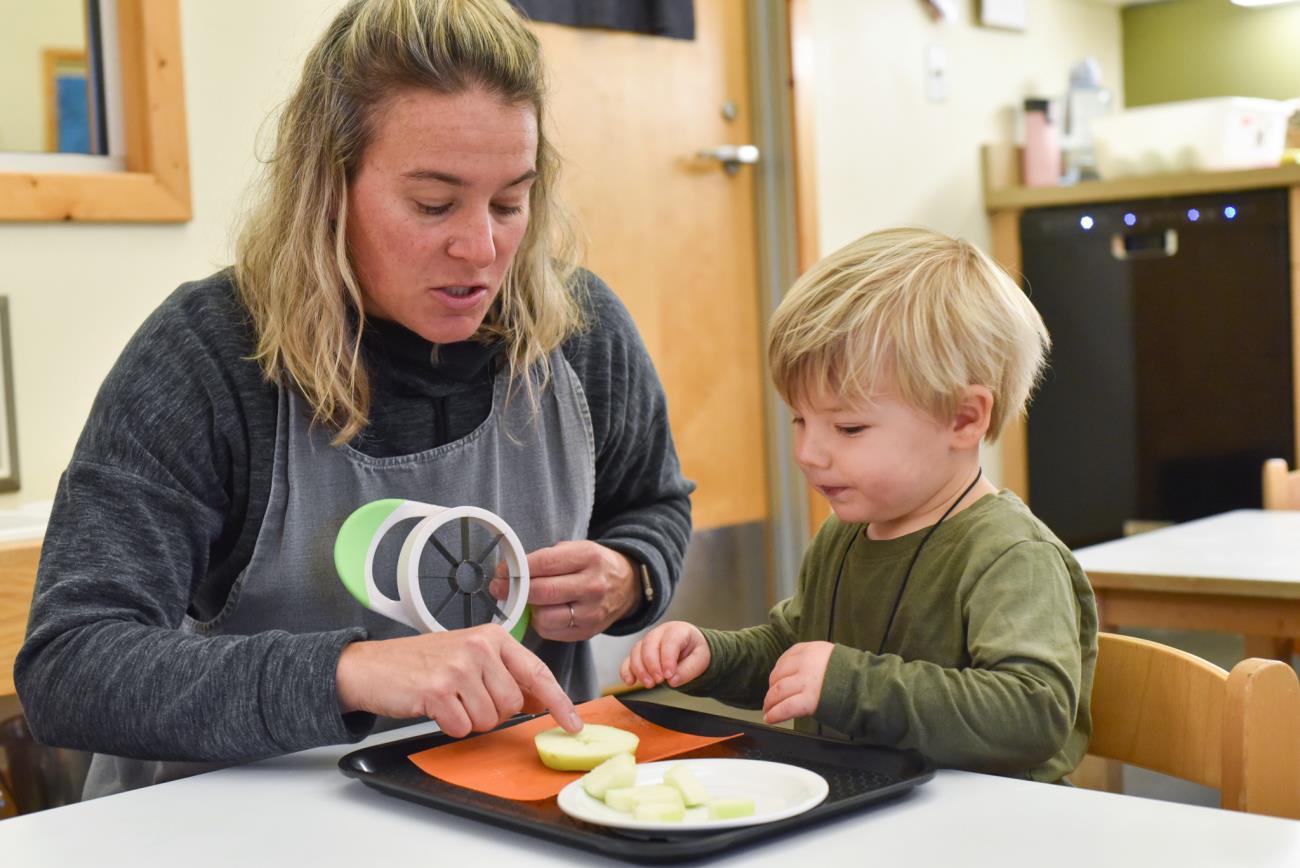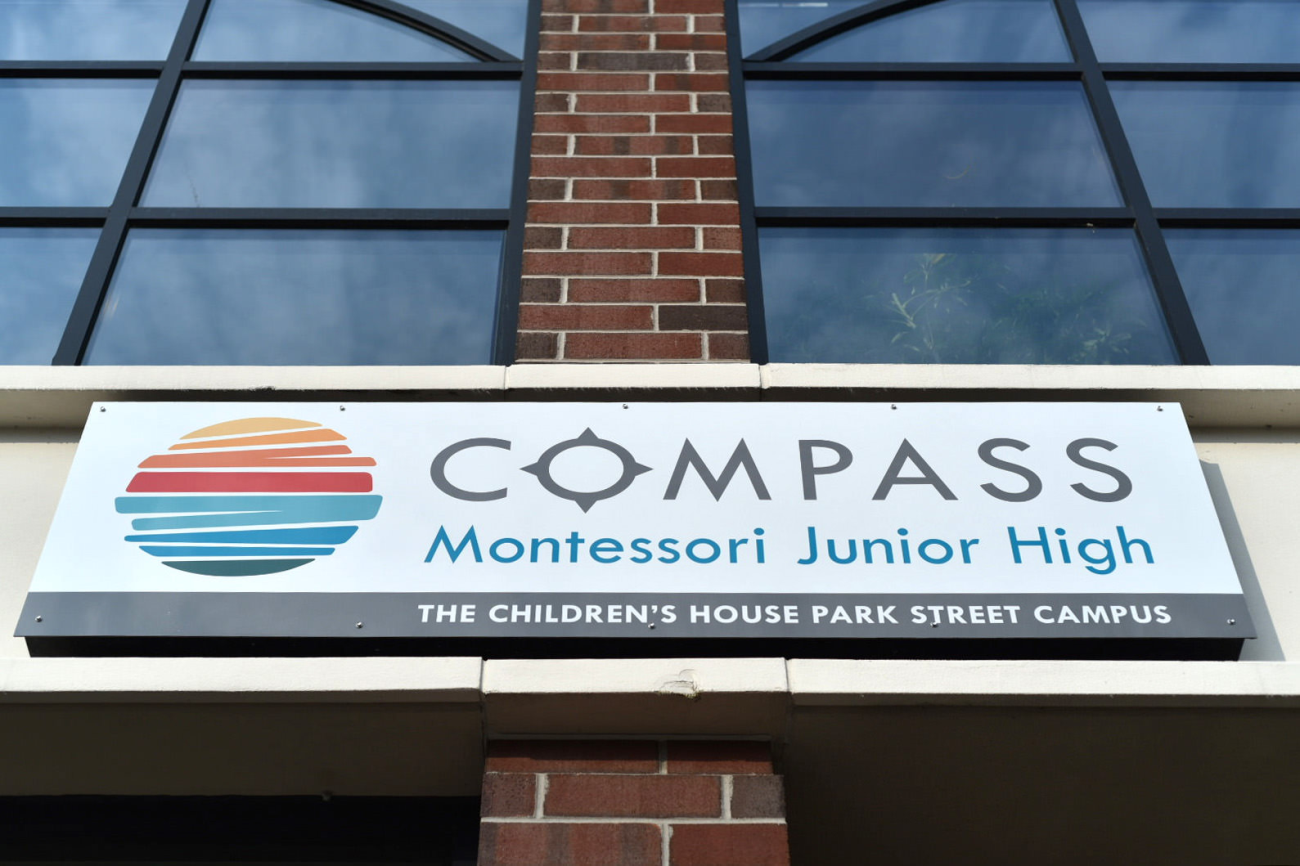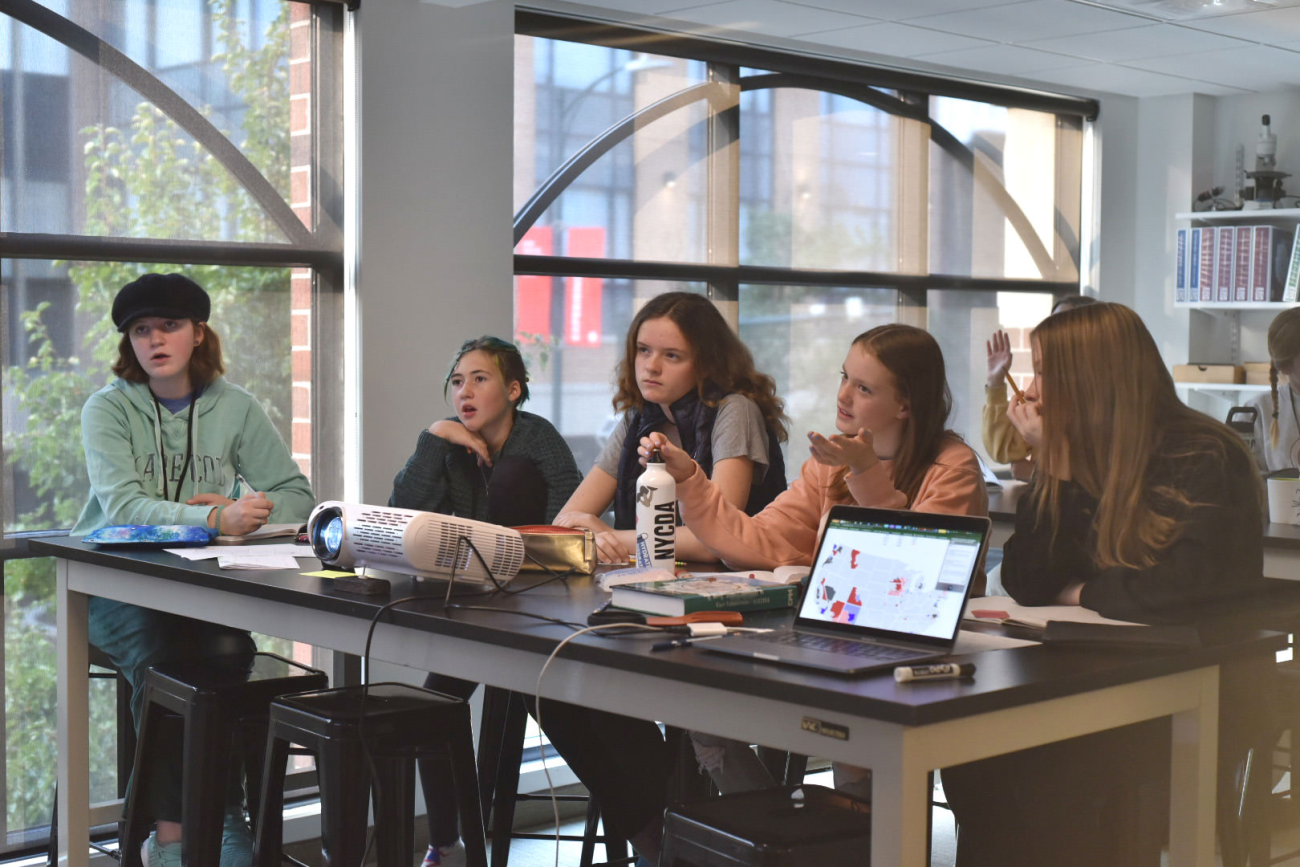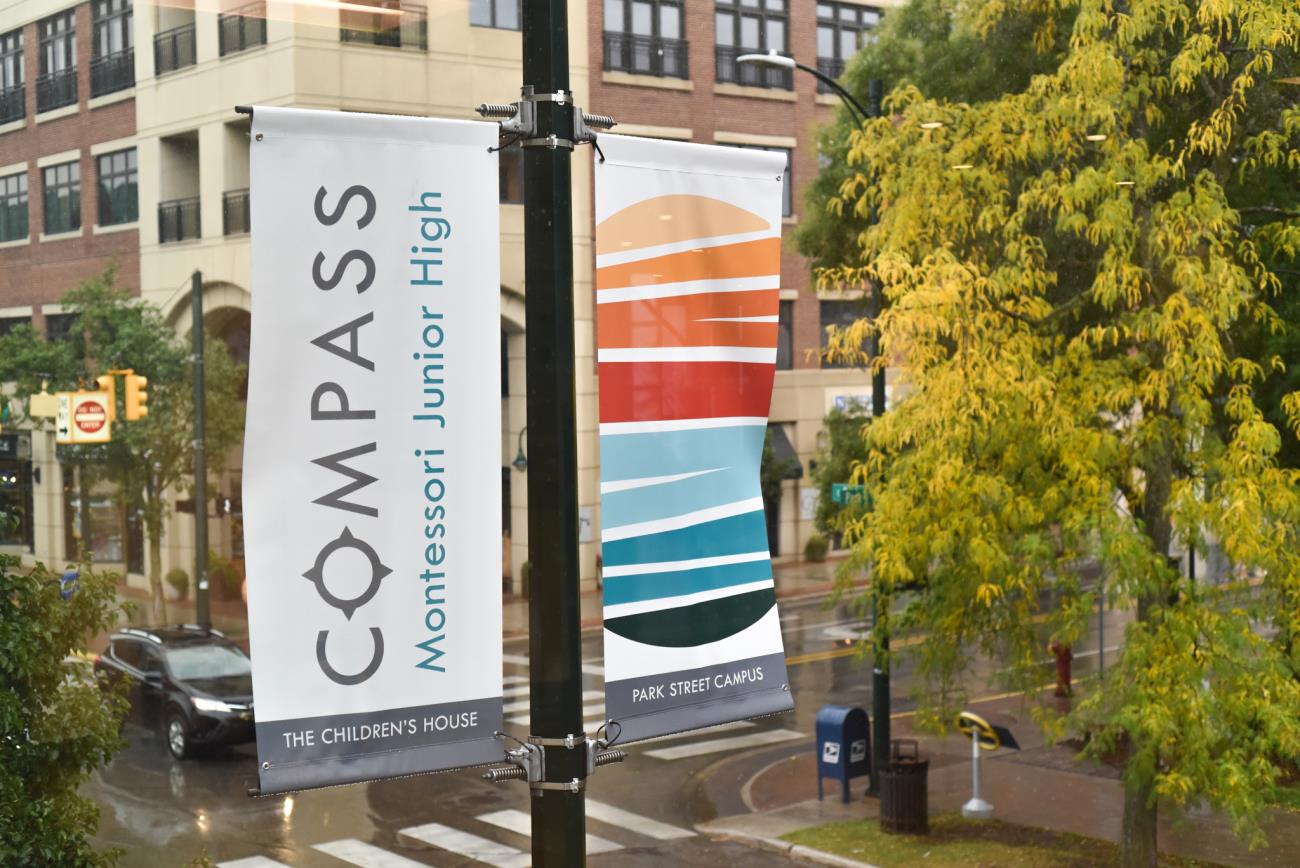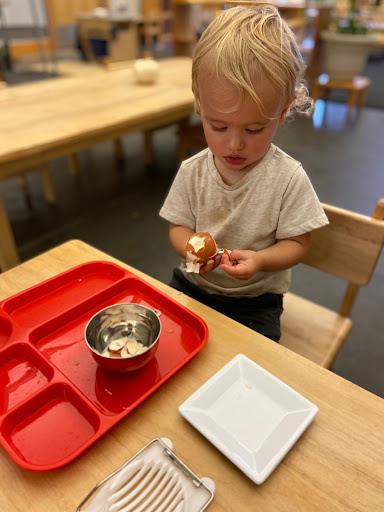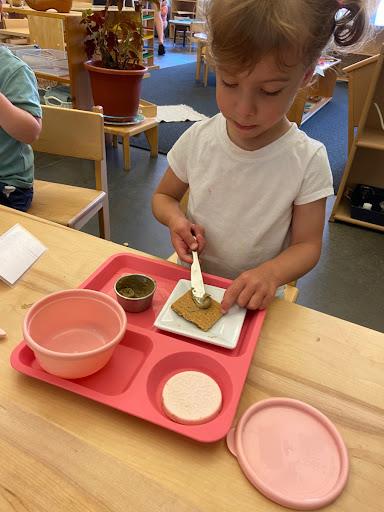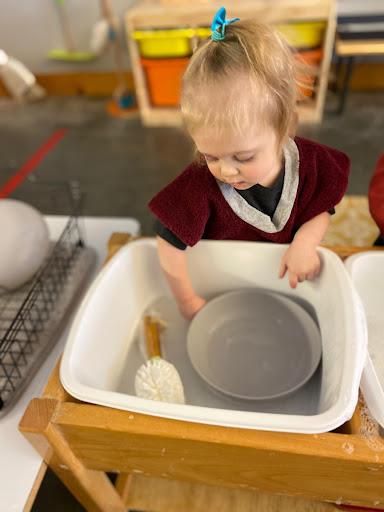Think back to when you first considered enrolling your child at The Children’s House. No matter the reason you chose to be here - and surely, there are a million - you have selected an environment that is not just a beautiful place for your child to spend their days; you have also joined a loving, supportive school community. As I welcome new families into the Young Children’s Community, I share with them that the community within our four walls will become your child’s new home away from home. It will become a place where both you and your child will develop strong, lasting friendships, and a place where you will feel supported as a parent and as a family. For some of you, this partnership is in its infancy; for others, we’ve had the privilege of sharing this partnership for many years. Regardless, this partnership is our commitment to the child.
In the Young Children’s Community, the home-school partnership begins early on, but the toilet learning process really illustrates the importance of the collective efforts between the adults in the child's life. Later on, this collaboration will take a different form - it could look like choosing a snowsuit that your child can put on independently, it could look like taking a moment to listen to your child read to you, it could even look like practicing concepts around fractions and measurements by baking a batch of cookies. As they grow, the tasks with which they engage, the challenges they encounter, their inner work as a growing young person - all of this will evolve, but the home-school partnership remains the same. We are rooting for you, we are rooting for your child. And we are looking forward to meeting with you soon at Parent Teacher Conferences.
Thank you for this privilege to partner with your family. We are so happy you’re here.
The Children’s House, an independent Montessori school, has renamed its junior high program. It is now named Compass Montessori Junior High and is located at 101 N. Park St.
After expanding its campus to downtown Traverse City in January 2022 and closing on the purchase of the 6,000 square foot space in August, the school wanted the name of the junior high to more accurately represent the students' experience.
“The downtown location gives our oldest students the space, independence, and access to the real world they need while they are learning to become adults. And, the new name and logo better reflect who these students are becoming and what this type of education is all about,” said Michele Shane, Head of School.
Jennifer Lake and Audra Tompkins of Brand Tonic worked with The Children’s House through a six-month process that involved the students from start to finish. The new logo represents the sun, water, and collective pieces of the whole. Each different shape represents the individual students and this critical transition in their education.
“We enjoyed working with the students to develop this new branding, allowing them to incorporate their ideas to create a logo that is a more mature version of The Children’s House logo,” said Lake. “In the process, the students learned about brand messaging, color theory, icon development and marketing.”
The Children’s House started its Junior High program in 2014 with four pioneer students, one teacher, and a single classroom. The program’s curriculum includes extensive travel to provide place-based educational opportunities for its seventh and eighth grade students.
Every aspect of the curriculum of the Young Children’s Community culminates within Food Preparation. There are big movements like carrying bowls to and from tables and dish carts. There are small movements like peeling the rind off of a clementine or holding a knife to spread jam on a slice of toast. There is so much language around smells and tastes as well as all the verbs that go along with preparing food. We express ourselves through the food that we choose to make for our friends, and we also experience traditions through the types of food that we make. Young children learn the manners of their culture through modeled grace and courtesy at meals and by preparing food for their peers. The exercises in the food preparation area are great for practicing sequencing because there are so many steps that need to be done to complete each task. Sequencing leads to focus, which is the ultimate goal of all work in the Young Children’s Community.
In the classroom, we offer individual activities for the children to prepare food for themselves and also a larger activity wherein the child prepares food for the entire group. Some of the individual activities include peeling an orange or an egg, slicing pickles, olives, or cheese, spreading on crackers, peeling and slicing a banana, and juicing citrus. We think about how to make these activities accessible for toddlers to do independently and then place them on the shelf. After a few presentations, many of the children can do these activities from start to finish with little to no adult assistance.
In YCC West, the food preparation activities consist of a lidded container with the food inside, a plate (or cup), and the tools needed to prepare the food. The entire activity is self contained so that the child does not have to locate any extra pieces. When we present an exercise, we do so by slowly opening the container, removing the food, and then carefully proceeding with the activity. This gives the child the opportunity to observe how our fingers and hands move to make the food.
Assisting in the kitchen is not limited to preparing food. Toddlers enjoy any experience with water, so washing dishes is a natural way to include them in the kitchen. We tell them that they can wash the dishes and we will use the dishwasher to sanitize them. The young child’s love for order makes them the perfect candidate for helping put dishes away. If there is an area of the kitchen at home that they can reach, such as a silverware drawer or lower cabinets, they likely know what goes in there already and would be thrilled to be invited to help unload the dishrack or the dishwasher when things are dry.
Even the youngest toddlers can be involved in helping to set the table. This may start with transferring dishes and cutlery to one spot on the table, but they eventually learn where each piece goes and can help count how many places need to be set at the table. Having a spot for the dishes that need to be transported to the table can help with the independence of this task, but you can also hand them plates one at a time and ask your child to carry them to the table if that works better in your home.
The joy of experiencing food with toddlers can extend from the classroom to the home environment. Here are some ideas for how to involve your child in preparing food for themselves and your family.
| Food preparation for 1 to 2 year-olds | Food preparation for 2 to 3 year-olds |
|
|
Baking with young children is a great way to involve them in celebrations with your family. When baking with very young children, it can be helpful to pre measure as many ingredients as possible. They can add these ingredients to the mixing bowl one at a time. This is a great opportunity for language development because we can talk about the names of the ingredients, their colors, smells, textures, etc. Older toddlers can help measure ingredients, which provides an opportunity to discuss quantities.
Once all the ingredients are added, the child can help mix them together. A younger child will likely need help remembering to scrape the sides of the bowl. If it is a dough that needs to be kneaded, many toddlers are very enthusiastic about pushing and folding the dough until it is soft and elastic. In our classroom, we then put the dough in a bowl and “tuck it in so it can rest” with a wet cloth. The bread dough recipe we use in our classroom is very forgiving. Once the dough is made, I have added cinnamon and sugar to make cinnamon rolls or topped a rising loaf with herbs to then dip in olive oil and balsamic for a savory snack.
|
Swedish Yeast Bread |
|
|
1¼ t yeast (small jar) 1½ t sugar (small jar w/ yeast) 3 T olive oil (oil carafe) 1 c warm water (large jar) |
2 c flour (large canister) 1 t salt (large canister w/ flour) ½ c oatmeal (small canister) |
|
|
